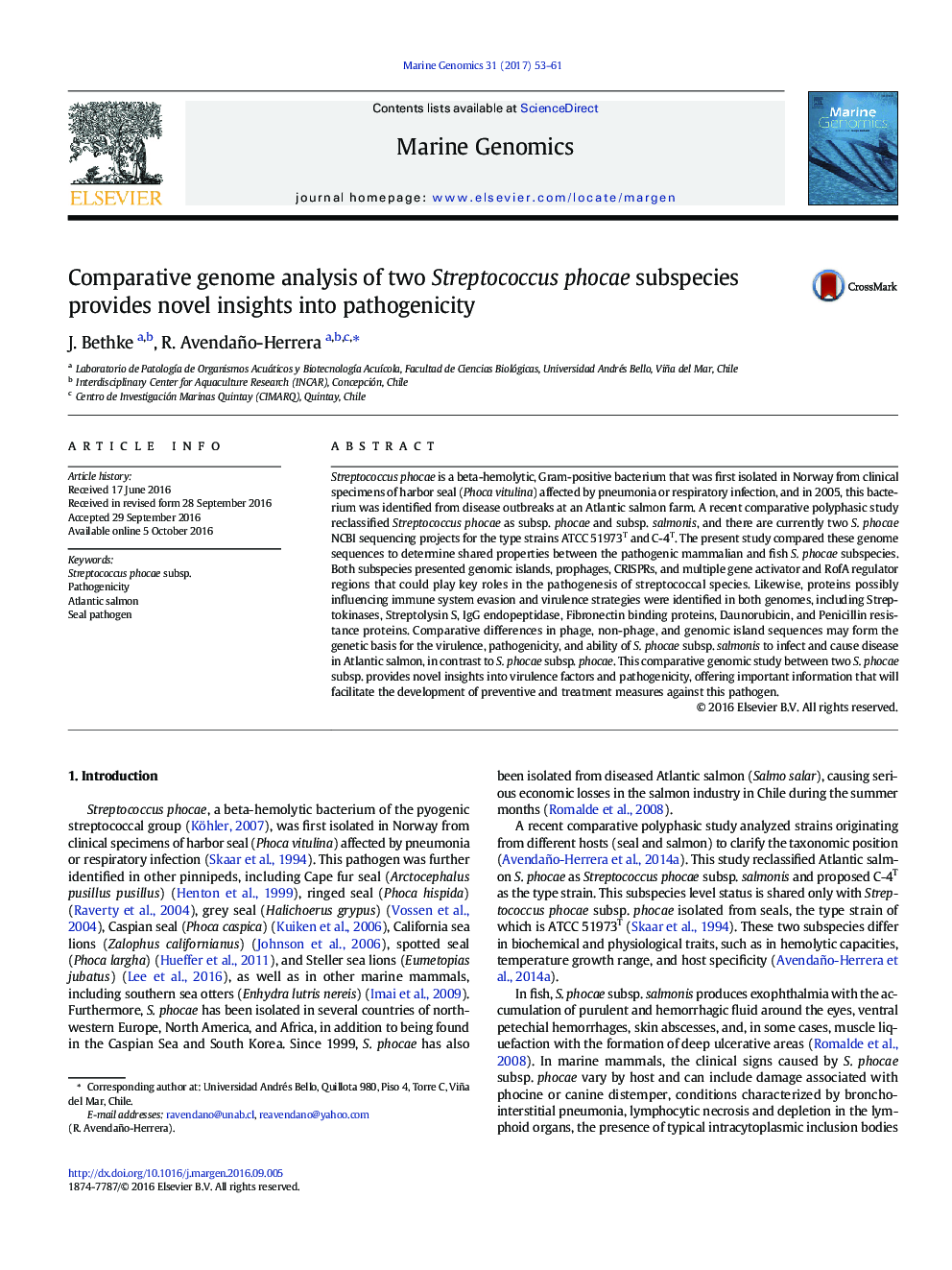| Article ID | Journal | Published Year | Pages | File Type |
|---|---|---|---|---|
| 5518263 | Marine Genomics | 2017 | 9 Pages |
Streptococcus phocae is a beta-hemolytic, Gram-positive bacterium that was first isolated in Norway from clinical specimens of harbor seal (Phoca vitulina) affected by pneumonia or respiratory infection, and in 2005, this bacterium was identified from disease outbreaks at an Atlantic salmon farm. A recent comparative polyphasic study reclassified Streptococcus phocae as subsp. phocae and subsp. salmonis, and there are currently two S. phocae NCBI sequencing projects for the type strains ATCC 51973T and C-4T. The present study compared these genome sequences to determine shared properties between the pathogenic mammalian and fish S. phocae subspecies. Both subspecies presented genomic islands, prophages, CRISPRs, and multiple gene activator and RofA regulator regions that could play key roles in the pathogenesis of streptococcal species. Likewise, proteins possibly influencing immune system evasion and virulence strategies were identified in both genomes, including Streptokinases, Streptolysin S, IgG endopeptidase, Fibronectin binding proteins, Daunorubicin, and Penicillin resistance proteins. Comparative differences in phage, non-phage, and genomic island sequences may form the genetic basis for the virulence, pathogenicity, and ability of S. phocae subsp. salmonis to infect and cause disease in Atlantic salmon, in contrast to S. phocae subsp. phocae. This comparative genomic study between two S. phocae subsp. provides novel insights into virulence factors and pathogenicity, offering important information that will facilitate the development of preventive and treatment measures against this pathogen.
